Estuary explorer: a floating weather station commences its tour of the Thames
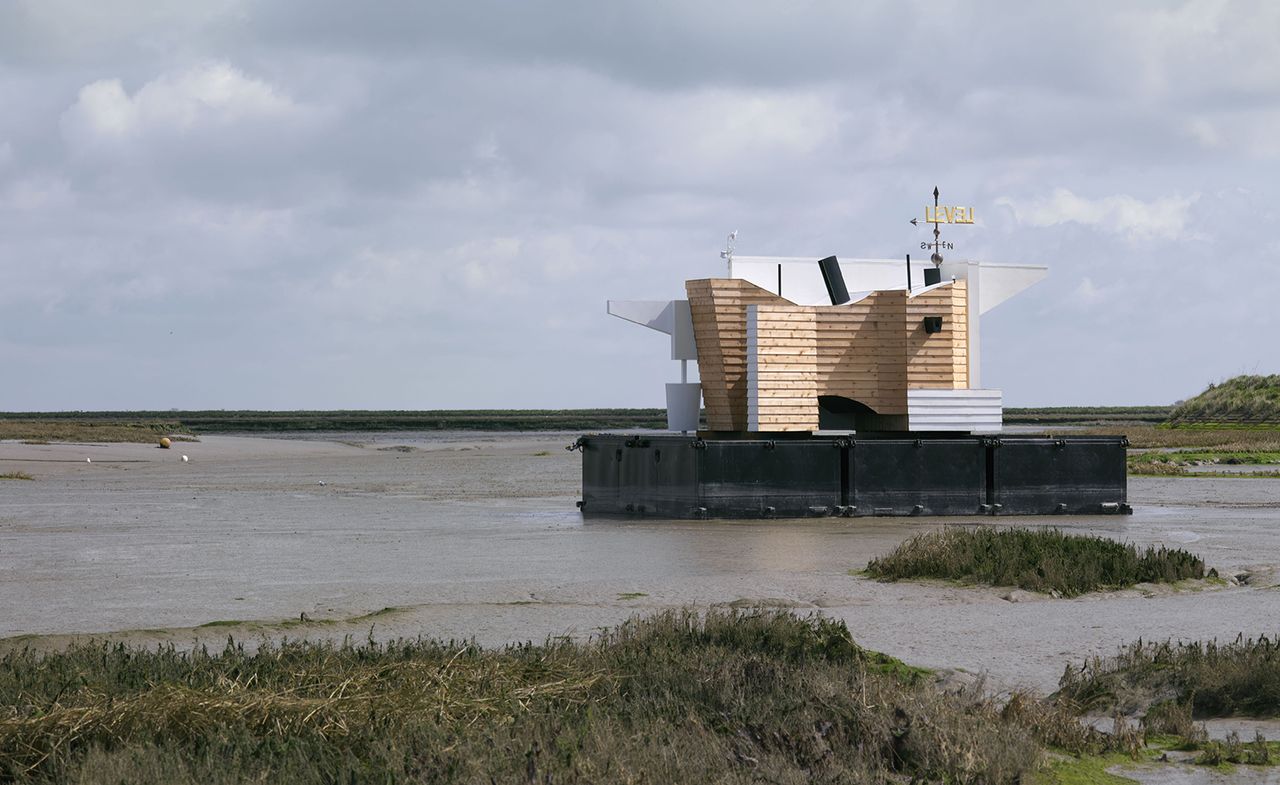
Rising sea levels, spiralling house prices and a shortage of development sites in the world’s major cities have prompted a spate of architectural proposals for floating residential concepts in recent years. As part of this ongoing dialogue, a new floating prototype conceived by architect and designer Matthew Butcher takes to the water this week, offering a more poetic perspective on the problem.
Scheduled to moor at a number of sites around the Thames Estuary, an area that is increasingly vulnerable to the risk of flooding, Butcher’s Flood House will be towed from site to site by a single tugboat over the next four weeks.
‘By presenting an architecture that is towed from one location to another and where occupation is effected by the rise and fall of the tides, the project seeks to question the way built structures relate to the environment,’ explains Butcher. ‘Architecture is usually considered to be a stable, fixed entity where internal temperature and conditions of comfort are heavily controlled. Flood House seeks to challenge these notions, suggesting instead a nomadic architecture that forms a responsive relationship to its surrounding environmental conditions.’
As well as serving as a poetic exploration, the project is also underpinned by a practical investigation into the surrounding environment. An onboard laboratory will record local weather conditions while also monitoring the condition of the structure’s plywood surface and how it reacts to its environment.
Measuring 5.5m by 7.5m, fabricated in ply and weatherboard and floating atop three steel pontoons, the structure takes its design cues from what Butcher refers to as the ‘Essex vernacular’ – fishing sheds and boats, World War II pillboxes and bunkers as well as the Maunsell naval sea forts.
A year in the making, the Flood House project was made possible by funding from UCL, where Butcher works as a tutor at the Bartlett School of Architecture, as well as the Focal Point Gallery in Southend-on-Sea, who worked with Butcher to develop a programme of commissions and events made in response to the project, in collaboration with curator Jes Fernie. An artwork by the artist Ruth Ewan is included.
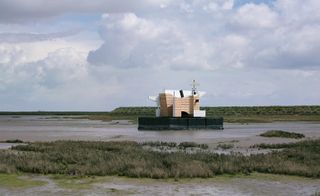
The project will be moored at the Thames Estuary, at the Southend-on-Sea Pier.

Meant as a poetic exploration, the project also has an onboard laboratory to record local weather conditions and monitor changes to the plywood surface.
INFORMATION
Flood House launches at Southend-on-Sea on 30 April, as part of the Radical Essex project, where it will remain moored until 12 May. For more information on Matthew Butcher, visit the website
Wallpaper* Newsletter
Receive our daily digest of inspiration, escapism and design stories from around the world direct to your inbox.
Ali Morris is a UK-based editor, writer and creative consultant specialising in design, interiors and architecture. In her 16 years as a design writer, Ali has travelled the world, crafting articles about creative projects, products, places and people for titles such as Dezeen, Wallpaper* and Kinfolk.
-
 Fendi celebrates 100 years with all-out runway show at its new Milan HQ
Fendi celebrates 100 years with all-out runway show at its new Milan HQIn the wake of Kim Jones’ departure, Silvia Venturini Fendi took the reins for a special co-ed A/W 2025 collection marking the house’s centenary, unveiling it as the first act of celebrations within Fendi’s expansive new headquarters in Milan
By Jack Moss Published
-
 ‘Leigh Bowery!’ at Tate Modern: 1980s alt-glamour, club culture and rebellion
‘Leigh Bowery!’ at Tate Modern: 1980s alt-glamour, club culture and rebellionThe new Leigh Bowery exhibition in London is a dazzling, sequin-drenched look back at the 1980s, through the life of one of its brightest stars
By Amah-Rose Abrams Published
-
 Inside the unexpected collaboration between Marni’s Francesco Risso and artists Slawn and Soldier
Inside the unexpected collaboration between Marni’s Francesco Risso and artists Slawn and SoldierNew exhibition ‘The Pink Sun’ will take place at Francesco Risso’s palazzo in Milan in collaboration with Saatchi Yates, opening after the Marni show today, 26 February
By Hannah Silver Published
-
 This modern Cotswolds home draws on its ancient woodland context
This modern Cotswolds home draws on its ancient woodland contextThis contemporary Cotswolds home, designed by NCA Architecture with interiors by Echlin, is a slice of the Mediterranean in the English countryside
By Tianna Williams Published
-
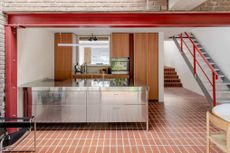 A Danish twist, compact architecture, and engineering magic: the Don’t Move, Improve 2025 winners are here
A Danish twist, compact architecture, and engineering magic: the Don’t Move, Improve 2025 winners are hereDon’t Move, Improve 2025 announces its winners, revealing the residential projects that are rethinking London living
By Ellie Stathaki Published
-
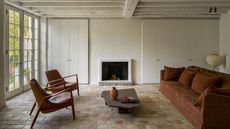 This Hampstead house renovation in London transcends styles and periods
This Hampstead house renovation in London transcends styles and periodsThe renovation of a Hampstead house in London by Belgian architect Hans Verstuyft bridges the classic and the contemporary
By Harriet Thorpe Published
-
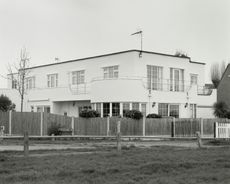 New book takes you inside Frinton Park Estate: the Essex modernist housing scheme
New book takes you inside Frinton Park Estate: the Essex modernist housing scheme‘Frinton Park Estate’, a new book by photographer James Weston, delves into the history of a modernist housing scheme in Essex, England
By Ellie Stathaki Published
-
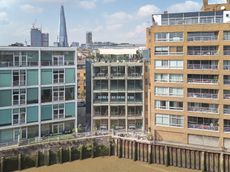 Conran Building's refresh brings a beloved London landmark into the 21st century
Conran Building's refresh brings a beloved London landmark into the 21st centuryConran Building at 22 Shad Thames has been given a new lease of life by Squire & Partners, which has rethought the London classic, originally designed by Hopkins, for the 21st century
By Ellie Stathaki Published
-
 Sadler’s Wells East opens: ‘grand, unassuming and beautifully utilitarian’
Sadler’s Wells East opens: ‘grand, unassuming and beautifully utilitarian’Sadler’s Wells East by O’Donnell and Tuomey opens this week, showing off its angular brick forms in London
By Tom Seymour Published
-
 2025 Serpentine Pavilion: this year's architect, Marina Tabassum, explains her design
2025 Serpentine Pavilion: this year's architect, Marina Tabassum, explains her designThe 2025 Serpentine Pavilion design by Marina Tabassum is unveiled; the Bangladeshi architect talks to us about the commission, vision, and the notion of time
By Ellie Stathaki Published
-
 We celebrate the emerging London architects to be excited about
We celebrate the emerging London architects to be excited aboutThese emerging London architects are some of the capital's finest ground-breakers, movers and shakers; heralding a new generation of architecture
By Ellie Stathaki Published